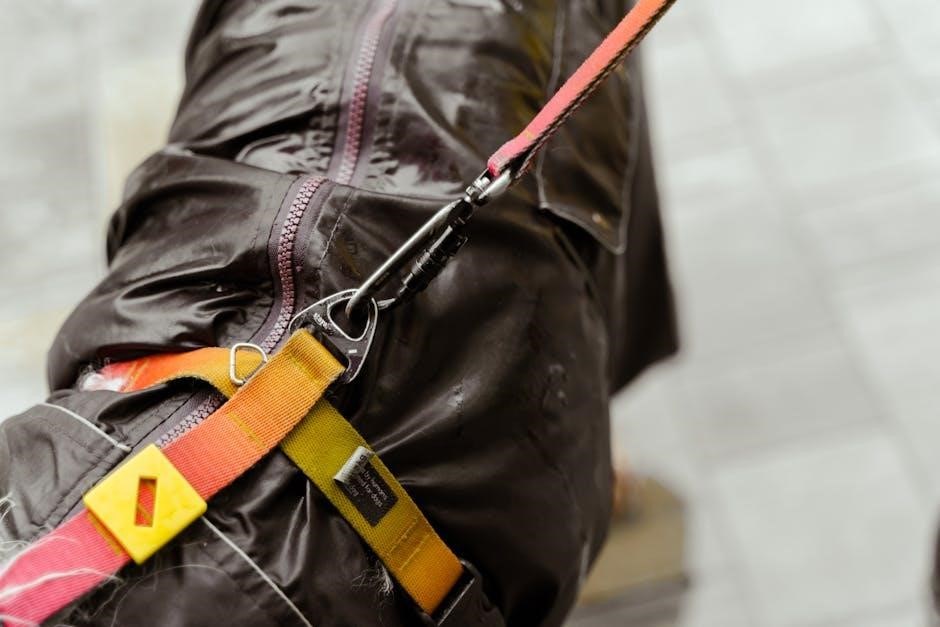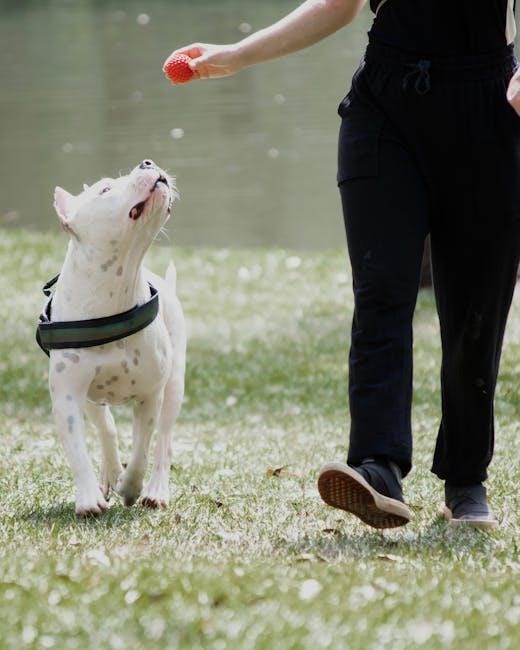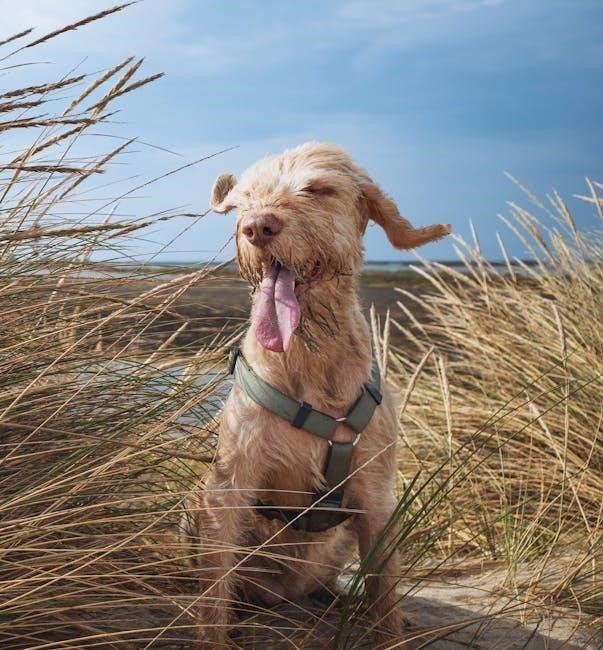Guide Dog Harness: A Comprehensive Guide
Welcome to a thorough exploration of guide dog harnesses! This guide unveils the crucial role these specialized harnesses play in facilitating safe and effective navigation for visually impaired individuals. We will delve into their functionality, types, and proper usage.
Guide dog harnesses are more than just accessories; they are vital tools that enable visually impaired individuals to navigate the world safely and confidently. These harnesses serve as a direct communication link, transmitting subtle cues and directions from the dog to the handler. The harness allows the handler to feel the dog’s movements, anticipating turns, stops, and potential obstacles.
Selecting the right harness is crucial, involving considerations like fit, material, and the specific needs of both the dog and the handler. Different harness types cater to various preferences and body types, ensuring comfort and functionality. Proper training and maintenance are essential for maximizing the harness’s effectiveness and ensuring the dog’s well-being.
This guide delves into the diverse world of guide dog harnesses, providing comprehensive information on their purpose, types, materials, fitting, maintenance, and more. Understanding these aspects empowers handlers to make informed decisions, fostering a strong and reliable partnership with their guide dogs. The harness remains the property of GDB.
Purpose of a Guide Dog Harness
The primary purpose of a guide dog harness is to facilitate clear communication and directional control between the visually impaired handler and their guide dog. Unlike a regular dog harness used for casual walks, a guide dog harness is specifically designed to provide tactile feedback, allowing the handler to interpret the dog’s movements and intentions. This direct connection is crucial for safe and efficient navigation in various environments.
The harness serves as an extension of the handler’s senses, enabling them to perceive subtle changes in the dog’s gait, indicating upcoming turns, stops at curbs or obstacles, and potential hazards. The rigid handle, a key component of the harness, provides stability and allows the handler to maintain a consistent connection with the dog, ensuring they move as a unified team.
Beyond navigation, the harness also signifies the dog’s working status, signaling to the public that the dog is performing a vital task and should not be distracted. This recognition helps maintain focus and ensures the safety of both the dog and the handler.
Types of Guide Dog Harnesses

While the fundamental purpose remains consistent, guide dog harnesses come in various designs to accommodate different dog breeds, handler preferences, and specific working conditions. Understanding the different types is crucial for selecting the most appropriate harness for a particular guide dog team.
The most common types include the standard vest harness, which offers excellent support and control, distributing pressure evenly across the dog’s body. This type is suitable for most dogs and provides a secure and comfortable fit. Another popular option is the breastplate harness, ideal for dogs with shorter coats or sensitive skin, as it minimizes friction and potential irritation.
Beyond these, variations exist in terms of handle design, adjustability, and material. Some harnesses feature padded handles for enhanced handler comfort, while others prioritize lightweight construction for increased dog mobility. Ultimately, the choice depends on individual needs and preferences, ensuring optimal performance and comfort for both the guide dog and their handler.
Standard Vest Harness
The standard vest harness is a classic and widely used design in the realm of guide dog equipment. Characterized by its vest-like construction, it provides comprehensive coverage of the dog’s torso, offering a secure and stable platform for guidance. This design typically features adjustable straps around the chest and belly, ensuring a snug and customized fit for various dog sizes and shapes.
A key advantage of the standard vest harness lies in its ability to distribute pressure evenly across the dog’s body, minimizing strain and maximizing comfort during extended periods of work. The robust construction and durable materials used in its creation make it a reliable choice for daily use in diverse environments.
Furthermore, the vest design allows for easy attachment of the guide handle, facilitating clear communication between the handler and the dog. Its simplicity and effectiveness have solidified its position as a cornerstone of guide dog equipment.
Breastplate Harness
The breastplate harness presents a distinctive alternative to the standard vest design, particularly favored for its comfort and suitability for dogs with shorter coats or sensitive skin. Unlike the vest harness, the breastplate harness features a prominent plate that rests against the dog’s chest. This design minimizes friction and potential irritation, ensuring a comfortable fit even during prolonged use.
The breastplate is typically crafted from soft, padded materials, further enhancing the dog’s comfort. Adjustable straps secure the harness around the dog’s girth, allowing for a customized fit. The leash attachment point is generally located on the breastplate itself, providing direct control and clear communication between the handler and the dog.
This type of harness is especially beneficial for dogs who may experience chafing or overheating with traditional vest harnesses. Its streamlined design promotes airflow and reduces the risk of discomfort, making it an excellent choice for warmer climates or dogs with sensitive skin; The breastplate harness offers a comfortable and effective guiding solution.
Harness Materials and Construction
The materials and construction of a guide dog harness are paramount to its functionality, durability, and the dog’s comfort. Typically, these harnesses are crafted from high-quality, robust materials designed to withstand daily use and varying weather conditions. Nylon webbing is a common choice due to its strength, resistance to abrasion, and ease of cleaning.
The webbing is often reinforced with stitching at critical stress points to ensure longevity and prevent tearing. Padding is strategically incorporated into the harness design, particularly in areas that come into direct contact with the dog’s body, such as the chest and girth straps. This padding is usually made from soft, breathable materials like fleece or neoprene to minimize chafing and maximize comfort.
Metal hardware, including buckles, rings, and adjustment sliders, are typically constructed from stainless steel or other corrosion-resistant materials to ensure reliable performance and prevent rust. The overall construction of the harness prioritizes both functionality and comfort, ensuring that the guide dog can perform its duties effectively and comfortably.
Proper Harness Fit and Adjustment
Ensuring a proper fit for a guide dog harness is crucial for both the dog’s comfort and its ability to effectively guide its handler. A well-fitted harness should be snug but not too tight, allowing for a full range of motion without causing chafing or discomfort. Start by measuring the dog’s girth and chest to determine the appropriate harness size, consulting the manufacturer’s sizing chart for guidance.
When initially fitting the harness, loosen all straps to their maximum extent. Position the harness on the dog’s body, ensuring that the chest plate is centered and the straps are aligned correctly. Gradually tighten each strap, checking for a snug fit that allows you to comfortably slide two fingers between the strap and the dog’s body.
Pay close attention to the fit around the shoulders and chest, ensuring that the harness does not restrict movement or cause pressure points. Once the harness is adjusted, observe the dog’s gait and posture to confirm that it moves freely and comfortably. Regularly check the fit of the harness, especially after weight gain or loss, and readjust as needed to maintain a proper and comfortable fit.

Importance of Harness Maintenance
Maintaining a guide dog harness is vital for ensuring its longevity, functionality, and the dog’s comfort. Regular cleaning removes dirt, sweat, and debris that can cause irritation and wear down the harness material. Inspect the harness frequently for signs of damage, such as frayed straps, loose stitching, or broken buckles. Addressing these issues promptly prevents further deterioration and ensures the harness remains safe and reliable.
Proper storage is also essential. When not in use, store the harness in a dry, well-ventilated area away from direct sunlight and extreme temperatures. This prevents the material from becoming brittle or mildewed. Depending on the harness material, follow the manufacturer’s instructions for cleaning. Generally, mild soap and water are sufficient for most harnesses.
For leather harnesses, use a leather conditioner to keep the material supple and prevent cracking. Regularly check metal hardware for rust or corrosion and lubricate as needed to ensure smooth operation. By prioritizing harness maintenance, you extend its lifespan, maintain its effectiveness, and ensure the guide dog remains comfortable and safe while working. A well-maintained harness also reflects the care and respect for the vital role the dog plays.

When to Replace a Guide Dog Harness
Knowing when to replace a guide dog harness is crucial for maintaining safety and effectiveness. While regular maintenance extends the harness’s life, wear and tear are inevitable. A harness should be replaced if there’s significant damage that compromises its structural integrity. This includes frayed or torn straps, broken buckles or closures, and excessive wear on the material, hindering proper adjustment.
Changes in the dog’s physical condition might also necessitate a replacement. If the dog gains or loses a significant amount of weight, the harness may no longer fit correctly. A too-tight harness can cause discomfort and restrict movement, while a too-loose harness reduces control and safety. Regularly assess the fit, ensuring it’s snug but not constricting.
Additionally, consider the harness’s age and usage. Even with meticulous care, the material degrades over time, and its ability to provide adequate support diminishes. If the harness shows signs of age, such as stiffness, fading, or a general decline in quality, it’s time to replace it. Prioritize the dog’s well-being and safety by proactively replacing the harness when necessary, ensuring reliable guidance and comfort.
Returning Harness Upon Retirement
Upon the well-deserved retirement of a guide dog, the harness, a symbol of years of dedicated service, is typically returned to the guide dog organization from which it originated. This practice is deeply rooted in the understanding that the harness remains the property of the organization, representing a significant investment in training and resources. The return of the harness serves several important purposes.
Firstly, it allows the organization to maintain control over its equipment and ensure that it is not misused or misrepresented. The harness is specifically designed and fitted for guide work, and its use by untrained individuals or on non-guide dogs could potentially lead to safety issues or damage the organization’s reputation.
Secondly, the returned harnesses can be inspected, refurbished, and potentially repurposed for training purposes or used as educational tools to demonstrate the design and functionality of guide dog equipment. This practice promotes resourcefulness and minimizes waste. The act of returning the harness also signifies a formal transition for the dog, marking the end of its working career and the beginning of a life of well-earned rest and companionship. This is a symbolic gesture of gratitude.
Harnesses and Biomechanics
The biomechanics of a guide dog harness are paramount to the dog’s comfort, efficiency, and long-term health. A poorly designed or ill-fitting harness can impede natural movement, leading to discomfort, strain, and potentially chronic musculoskeletal issues. Research highlights that certain harness types can restrict shoulder movement and reduce stride extension, negatively impacting the dog’s gait and overall performance.
A well-designed harness should distribute pressure evenly across the dog’s body, avoiding concentrated pressure points that can cause chafing or pain. The harness should allow for a full range of motion in the shoulders and legs, enabling the dog to move freely and efficiently. The chest piece should be shaped to avoid the trachea, ensuring unrestricted breathing, which is especially crucial for smaller breeds.
Materials used in the harness construction also play a significant role in biomechanics. Lightweight, breathable materials minimize bulk and prevent overheating, while durable materials ensure the harness can withstand the demands of daily guide work. Proper fit is essential for optimal biomechanics. A harness that is too tight can restrict movement and cause discomfort, while a harness that is too loose can slip and rub, leading to irritation.
The White and Red Square Harness
The white and red square harness holds a special significance within the guide dog community. This distinctively marked harness serves as a clear visual indicator that the dog is partnered with an individual who is both blind and deaf. The unique color combination and square shape are easily recognizable, allowing the public to readily identify the specific needs of the handler and their guide dog.
This visual cue alerts others to exercise extra caution and understanding when interacting with the team. It signals that the handler may not be able to hear verbal cues or see potential obstacles, emphasizing the importance of providing ample space and avoiding sudden movements that could startle the dog.
The white and red square harness promotes a more inclusive and accessible environment for blind-deaf individuals, fostering greater awareness and sensitivity within the community. By clearly communicating the handler’s dual sensory impairment, the harness helps to bridge communication gaps and facilitate smoother interactions in various public settings. It serves as a symbol of independence, enabling individuals with combined vision and hearing loss to navigate the world with increased confidence and safety, thanks to their expertly trained guide dogs.
Training with a Guide Dog Harness
The guide dog harness is more than just equipment; it’s a crucial communication tool during training. Introducing the harness is a gradual process, associating it with positive reinforcement. Initially, the dog learns to accept the harness comfortably, receiving treats and praise. Next, trainers introduce gentle pressure and directional cues through the handle.
The dog learns to respond to subtle movements, understanding that these translate into specific commands. Consistency is key, ensuring the dog associates each movement with a desired action, such as turning left, right, or stopping. Over time, the harness becomes a seamless extension of the handler’s intentions, allowing for clear and precise guidance.
Training also involves desensitizing the dog to various environmental distractions while wearing the harness. The dog learns to focus on the handler’s cues, ignoring external stimuli. This rigorous training transforms the harness into a symbol of work, signaling to the dog that it’s time to focus and guide its handler safely. Through consistent training, the guide dog learns to interpret even the slightest movements of the harness, enabling seamless navigation.
Harnesses and Identification
Guide dog harnesses serve a dual purpose: providing guidance and acting as a visual identifier. The harness clearly signals to the public that the dog is a working animal, not a pet. This distinction is crucial, as it informs others to give the dog and handler space and avoid distractions. The harness often incorporates specific colors or markings that further emphasize the dog’s role.
For instance, some organizations use specific harness colors to indicate a dog is in training, alerting the public to the dog’s learning status. Other harnesses may feature patches or labels identifying the guide dog organization or the dog’s name; These identifiers aid in quickly recognizing the dog’s purpose and promote understanding and respect from the community.
Furthermore, in certain regions, the harness may serve as legal documentation, granting the guide dog and handler access to public spaces where pets are typically restricted. By acting as a clear and visible identifier, the harness helps ensure the guide dog team can navigate environments with ease and dignity, while also fostering awareness and acceptance within the broader community. The harness is a symbol of partnership, independence, and the invaluable contribution of guide dogs.

